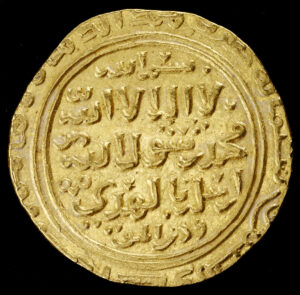
LNS 89 N
Gold coin (double dinar) of the Mamluk Sultan Baybars I, struck at Cairo, AD 1262–63
With more than 12,000 coins in the collection, The al-Sabah Collections numismatic holdings are extensive. Coins in the collection were minted in virtually every corner of the geography of the Islamic world. Equally notable, they were minted over a period of some 6,000 years – from the Bronze Age through the 19th century CE.
All minted coins are invaluable records, rich with historical, social, artistic and, of course, economic information. One could argue the true value of a coin is often found in the stories it tells. Using the coins from the Islamic collection, one can trace the influence of pre-Islamic cultures, the history of dynasties, the geographic spread of the religion, and the evolution of artistic styles. The largess of the different rulers is also evident, in the motifs, symbolism and scale of the coins.

Gold coin (double dinar) of the Mamluk Sultan Baybars I, struck at Cairo, AD 1262–63
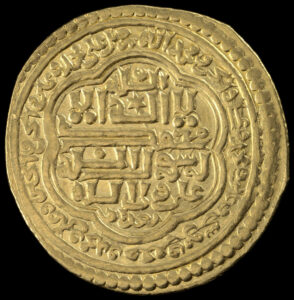
Gold coin (double dinar) of the Ilkhanid ruler Uljaytu ibn Arghun, struck at Baghdad, AD 1315–16

Silver coin (dirham) of the Rum Saljuq Sultan Kaykhusraw II ibn Kayqubad, struck at Konya, Turkey, AD 1241–42
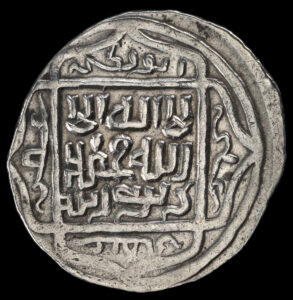
Silver coin (tanqa) of the Timurid Sultan Shah Rukh ibn Timur, struck at Astarabad, AD 1426–27
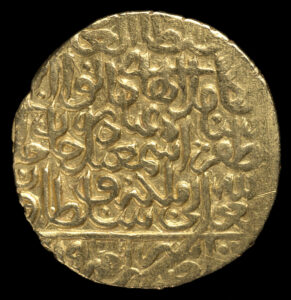
Gold coin (ashrafi) of the Safavid Sultan Shah Isma‘il, struck at Tabriz, AD 1510–11

Gold coin (dinar) of the Saljuq Sultan Malikshah ibn Muhammad, struck at Amul, Iran, AD 1086–87
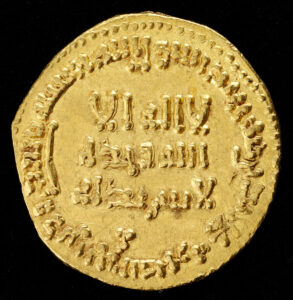
Gold coin (dinar) of the Umayyad Caliph Abd al-Malik ibn Marwan, struck at Damascus, AD 699–700
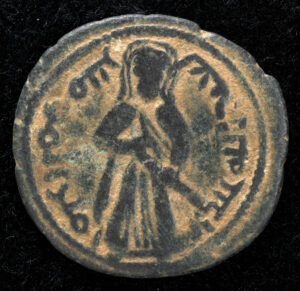
Copper coin (fals) of the Umayyad Caliph Abd al-Malik ibn Marwan, ‘Standing Caliph’ type, struck at Homs, Syria, AD 693–97

Silver coin (dirham) of the Muwahhid rulers, struck at Fez, Morocco, 12th century
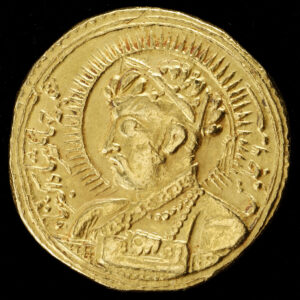
Gold coin (portrait muhur) of the Mughal Emperor Jahangir, dated AH 1020 / AD 1611
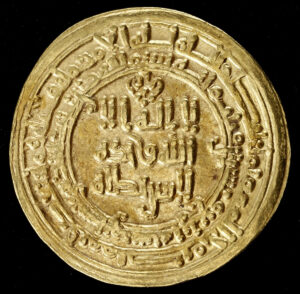
Gold coin (dinar) of the Samanid ruler Nasr II ibn Ahmad II, struck at Nishapur, Iran, AD 935–36

Gold one-hundred muhur presentation coin of Shah Jahan, struck at Lahore, AD 1638–39

Gold coin (dinar) of the Abbasid Caliph Harun al-Rashid, struck in Iraq, AD 786–87
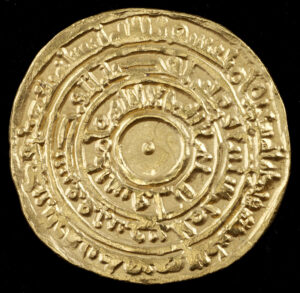
Gold coin (dinar) of the Fatimid Caliph al-Mu‘izz li-Din Allah, struck in Palestine, AD 969–70

Gold coin (tanqa) of the Ottoman Emperor Mustafa III, struck at Istanbul, AD 1757–58
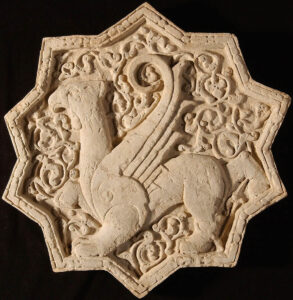
Stone and stucco have a long history in the art and cultures that became the Islamic world. Even as far back as the Bronze Age, stone was used to create almost reverential objects of sacred animals, demons and gods/goddesses.

Ceramics is one of the oldest industries, dating back to the Paleolithic era, more than 30,000 years ago. While The al-Sabah Collection is rich in ceramics, the primary focus of the collecting effort concentrated on covering the range of different
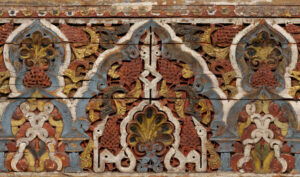
Objects of ivory and wood comprise decorative architectural items such as beams and doors, and smaller items such as boxes, jewellery and gaming pieces. Relatively few examples have survived due to the perishability of the materials.
That said, an ivory